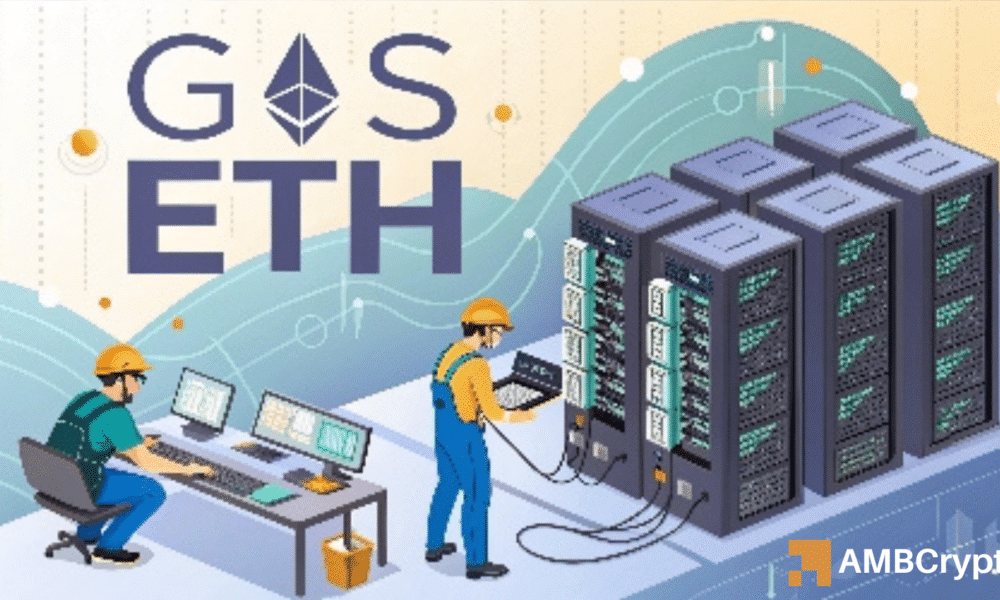The Dive in Ethereum Gas Fees by 70% to a Four-Year Low – What’s Behind This Sharp Decline?
Recently, Ethereum’s blockchain, a vital infrastructure for numerous crypto projects such as DeFi and NFTs, experienced a significant 70% plunge in gas fees, reaching its lowest point in four years on February 20.
The daily fee volume decreased from $23 million to $7.5 million.
Based on figures from IntoTheBlock, the average gas price nosedived to approximately 5 gwei, equating to about $0.80 per transaction, marking a substantial decrease from the $20-plus transaction fees previously witnessed during peak periods in 2024.
This decline has triggered a wave of curiosity among analysts and users regarding the factors driving this sharp fall. Two main catalysts identified were the increased adoption of Ethereum L2 solutions for off-chain transactions and a reduction in mainnet network activity.
The Surge of Ethereum L2 Solutions
An upsurge in Layer 2 (L2) solutions such as Arbitrum [ARB], Optimism [OP], and Base, which execute transactions off the main Ethereum chain while upholding its security features, has been a significant contributor to the diminished fee rates.
Collectively, L2 networks now handle over 1.5 million transactions on a daily basis, a notable increase from 800,000 transactions just a year ago.
Following the Dencun upgrade, which introduced “blobs” to reduce L2 data expenses, gas fees on these networks have plummeted by up to 90%, with some transactions costing just a few cents.
For Rollups, data is shared but still curtails activity on the mainnet.
Similar to Rollups, Validiums and Optimiums periodically publish state commitments of transactions validated by Ethereum, although data is not disseminated on the mainnet.
The Decrease in Network Activity
Concurrently, Ethereum’s mainnet observed a slowdown with a drop in daily transactions from 1.2 million in January 2024 to slightly over 900,000 in February 2025.
This decline corresponded with a decrease in volumes on decentralized exchanges (DEXs) to $2.62 billion daily, down from a 2024 peak of $5 billion.
The waning enthusiasm around meme coins and speculative NFT releases has further softened the demand for block space.
Since the Dencun upgrade, ETH issuance has surpassed burns by 197,000 ETH, equivalent to $500 million, indicating reduced fee stress.
The affordability of transactions could potentially drive adoption, yet there are anticipated challenges as L2 fragmentation might dilute market liquidity.
While L2s like Base, with a remarkable $8 billion in Total Value Locked (TVL), continue to prosper, Ethereum’s mainnet could morph into a security foundation rather than just a transaction hub.

